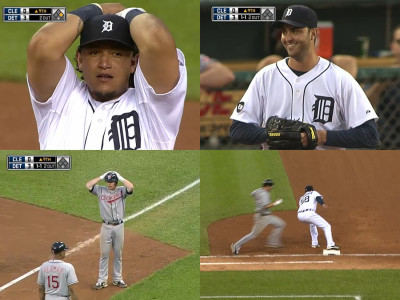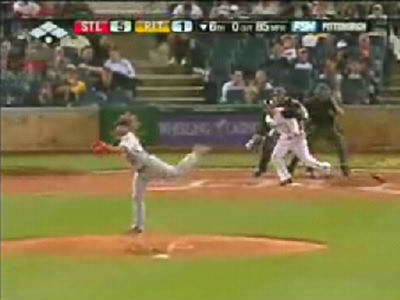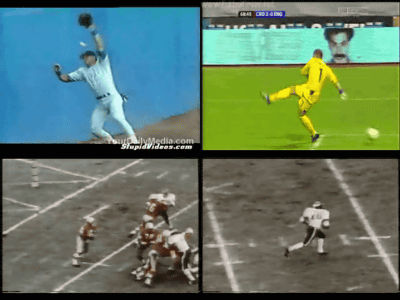Major league 11 seasons · Analysis of 4 million ball pitch data and analysis of how well the referee judged

by
Using the statistical database ' Baseball Savant ' published by Major League Baseball (MLB) official, we analyzed about 4 million balls thrown in 11 seasons from 2008 to 2018 and analyzed about false referee by referee The research paper has been published. According to this, the mishearing rate for pitching in the past 11 seasons is 12.78%, but the mishearing rate seems to exceed 20% if it is limited to two strikes.
BU Today | Boston University MLB Umpires Missed 34, 294 Pitch Calls in 2018. Time for Robo-umps?
https://www.bu.edu/today/2019/mlb-umpires-strike-zone-accuracy/

An analysis of nearly 4 million pitches shows just how many mistakes umpires make
https://phys.org/news/2019-04-analysis-million-pitches-umpires.html
Data from 11 seasons and 4 million pitches were analyzed by Mark Thomas Williams of Boston University and a research team of graduate students majoring in data mining at the Boston University Questrom School of Business . From 4 million balls worth of pitching data in the analysis, which pitch is a strike is determined to be, what pitching is balls to analyze what has been determined that, ranking taking into account the accuracy of the age and experience of the referee of the decision of the referee doing.

by
There are 30 teams in the major league, and each team's home stadium has a system called ' Statcast ' that tracks how the ball thrown by the pitcher passes through the home base. You Statcast is used to analyze player's movement and ball movement at high speed with high precision using stereo camera and radar, and data about 'release point' 'ball speed' 'feeling speed' 'rotation number' It will be displayed as. The Statcast can track the position of the ball as many as 50 times in a single pitch, and has an accuracy of only 1 inch (about 2.54 cm).
Although the data output by Statcast is mainly used by baseball fans to evaluate the players' performance, it is not a suitable data format for evaluating whether the judgment of the referee is accurate. So, the research team led by Williams analyzed the data focusing on the judgment of the referee.
The 11 seasons · 4 million ball pitch data used for analysis is based on data collected by Statcast and PITCHF / x . The data was sorted, formatted and overlaid on a standard strike zone map to rank the referee's mistrial rates.

by
As a result of analysis, it has been revealed that the rate of misjudgment of referees is very high. In the 2018 season, the wrong judgment was made with 34,246 balls, which means that 14 balls per game on average and 1.6 balls per inning are misheard. In addition, 55 games out of the games played in the 2018 season are said to have received the game set due to a wrong judge.
A compilation of the “Total Calls”, “Bad Calls” and “BCR” for the past 11 seasons. The mistrial rate is decreasing year by year, and the MLB mishearing rate is 12.78% on average over the entire survey period.
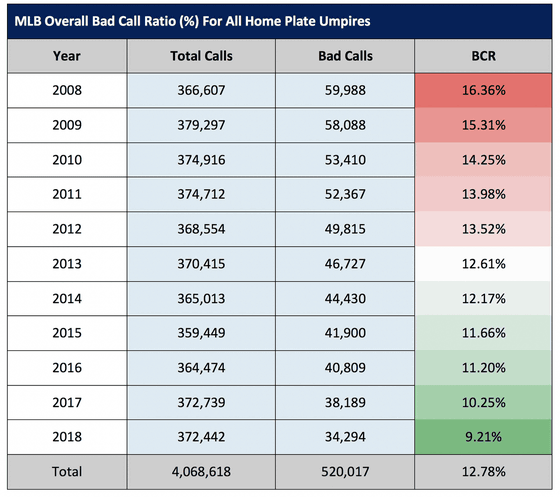
Misjuices are particularly likely to occur at the timing of two strikes, at which time the rate of misjudgments for all referees increases. The following graph summarizes the misjudgment rate at the time of 2 strikes in 11 seasons, and the following graph shows the number of balls that became the strike (Called Strike Three) from the left, and the ball that the strike was incorrectly determined to be a ball Indicates the number (Ball Called Strike) and the “Incorrect Call%”. Although the mistrial rate at the time of 2 strikes is decreasing year by year, the average mistrial rate for 11 seasons is 29%. In addition, this is about twice the false trial rate at the time of a North Strike or 1 strike.

The mistrial rates by strike zone and after the season are as follows. The rate of mistrials in the lower strike zone has been falling year by year, and the rate of mishearing in the 2008 season is clearly higher than that in the high strike zone and is 40% or more, but dropped to 10% in the 2018 season. You
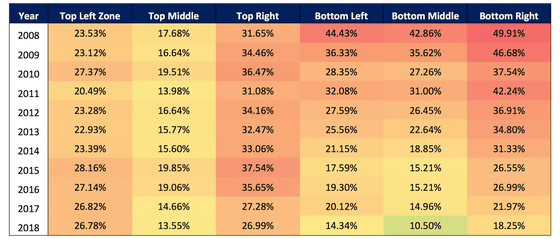
The figure below summarizes the mistrial rates for the past 11 seasons by inning. It seems that mishearing rates tend to be high in one, two and nine times.

Also, it is clear that it is not the 'younger inexperienced referee' who has the highest mistrial rate but the older veteran's referee. The average age of MLB referees is 46 and the average age of MLB referees is 13 years. However, among the 11 seasons of data analyzed, the lowest mistrial rate was the 33-year-old novice judge who experienced less than three years as a MLB referee. From this data, 'in the same way as a professional baseball player, also it seems there is an age peak to referee' of science related media and
The figure below summarizes the top 10 referees who had the lowest false negative rate (BCR) in the past 11 seasons. All the judges ranked in the top 10 low mistrial rates in the 20s and 30s, and considering that the average age of MLB referees is 46 years, it is clear that the misjudgment rate of 'young inexperienced referee' is low I understand.

On the contrary, the chart below summarizes the top 10 referees with the highest mistrial rate in the past 11 seasons. All referees are over 50 years old and above the average age of MLB referees.

In the case of inexperienced referees, the number of decisions is too small, and if you focus only on the decision of the 2018 season, the top 10 referees with low mistrial rates are as follows. The average age of 10 people is 37.8 years old and the mistrial rate is 7.78%.

On the other hand, the top 10 referees with a high mistrial rate in the 2018 season are as follows. The average age of 10 people is 56.6 years old and the mistrial rate is 10.88%.

In addition, Phys.org stated, 'Despite this data, MLB retires the notorious referee and resists hiring a better young referee. With the aging of referees, the league It is difficult for fresh new referees to leave an impact. '

by Eduardo Balderas
Despite the introduction of advanced analysis systems such as stat-casts into the stadium, MLB continues to resist using these systems to determine pitcher throwing balls. The referee continues to make strike and ball decisions visually by the referee, as it did a century ago when the baseball god Babe Ruth played.
Phys.org 'does not suggest that baseball referees be replaced by robots. There is too much complexity to assume that baseball can replace referees with robots. MLB uses the existing technology to allow the referee to do a better job and has a unique opportunity to enhance human-software collaboration, 'notes the machine to make the referee's decision more accurate. We propose to apply the system.
Technology also helps reduce false negative rates and reduce biases. It minimizes the subjectivity of strike zones per umpire, and eliminates the need for batter and pitchers to focus on batting and pitching, and to focus on remembering a particular umpire's strike zone. It is also clear that the introduction of technology will help reduce the confrontation between the referee and the team, making it more fun for fans and players.
Since the same referee is frequently mentioned in the wrong referee, I would like to introduce a system like this, and I would like a system with a high false referee rate to be off the ball referee or to have a retraining program.
Ball Trial Hashimoto's Super Narrow Strike Zone (2013)-YouTube
Hanshin Tigers Katsuo Hirata two army coach protests against Shirai Kazuyuki ball court-YouTube
Related Posts:
in Note, Posted by logu_ii




